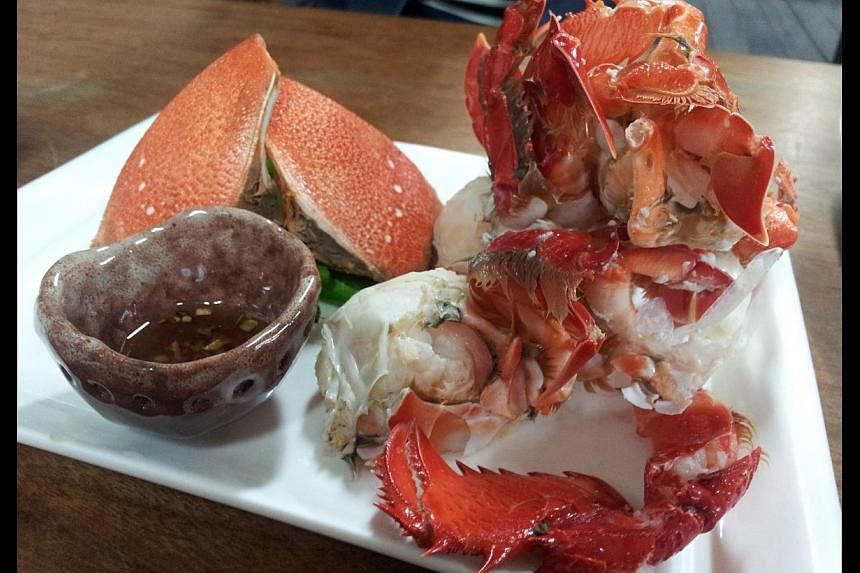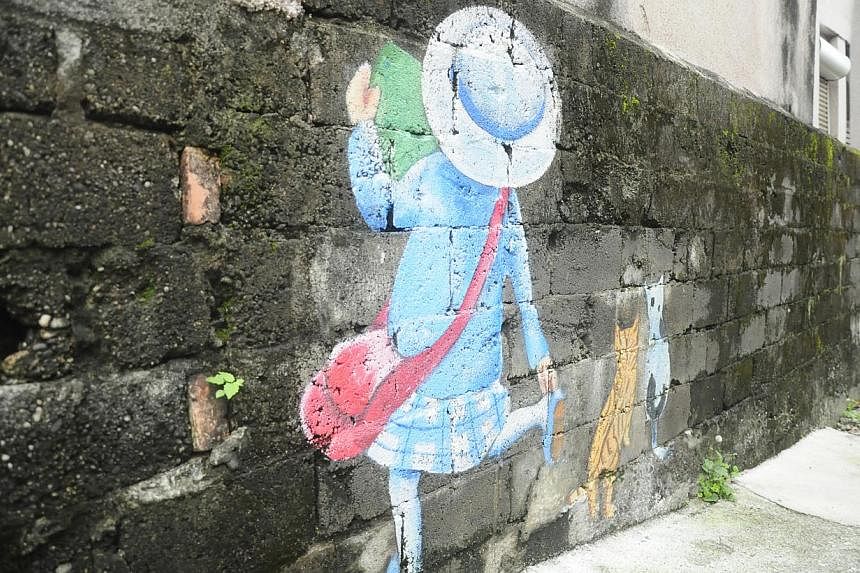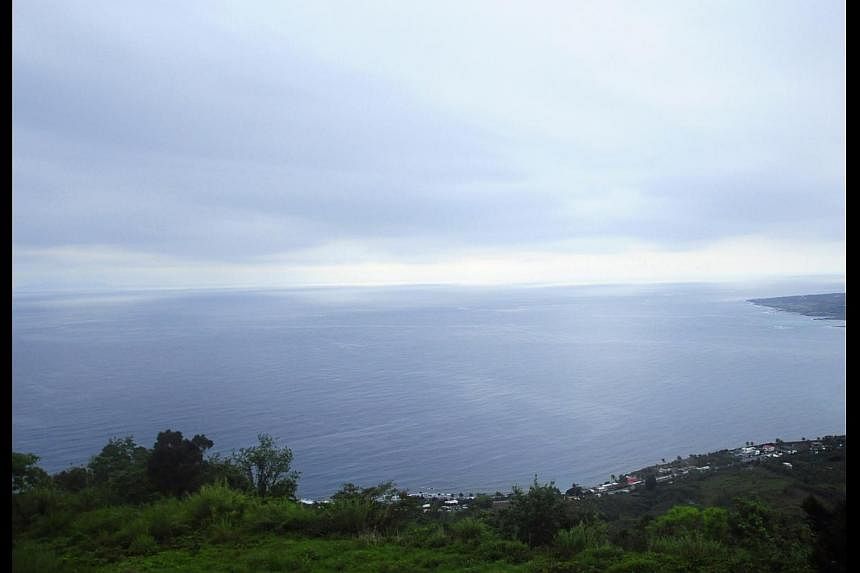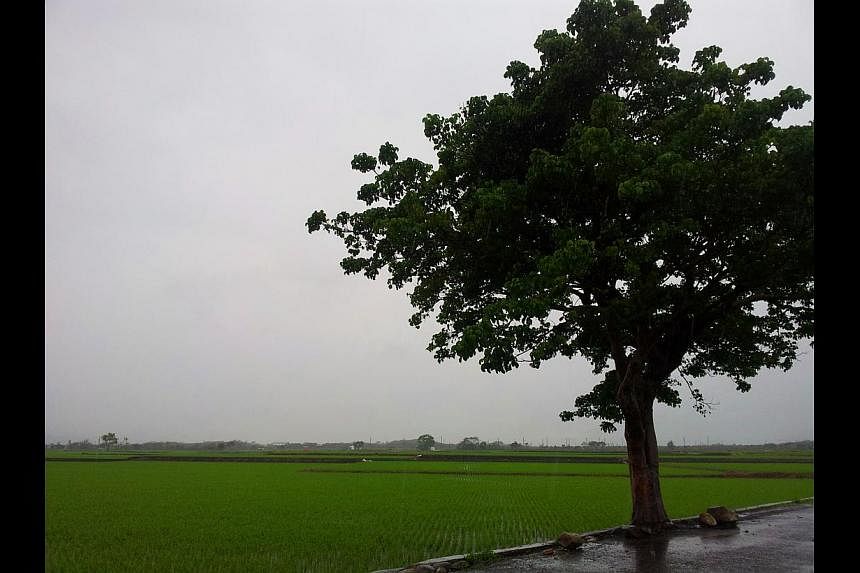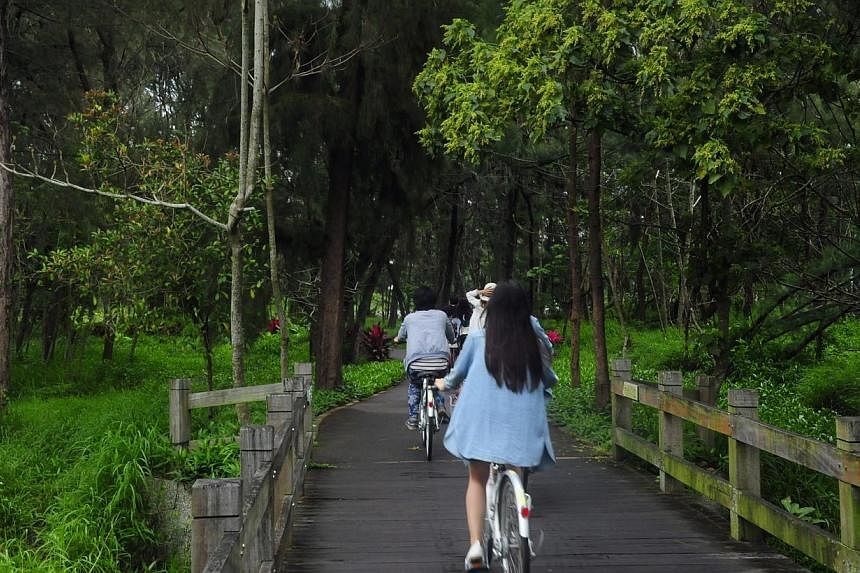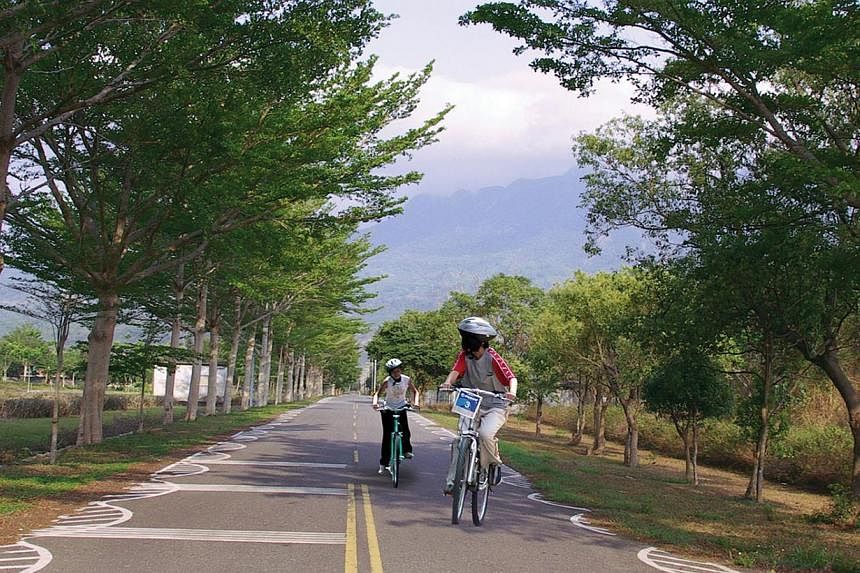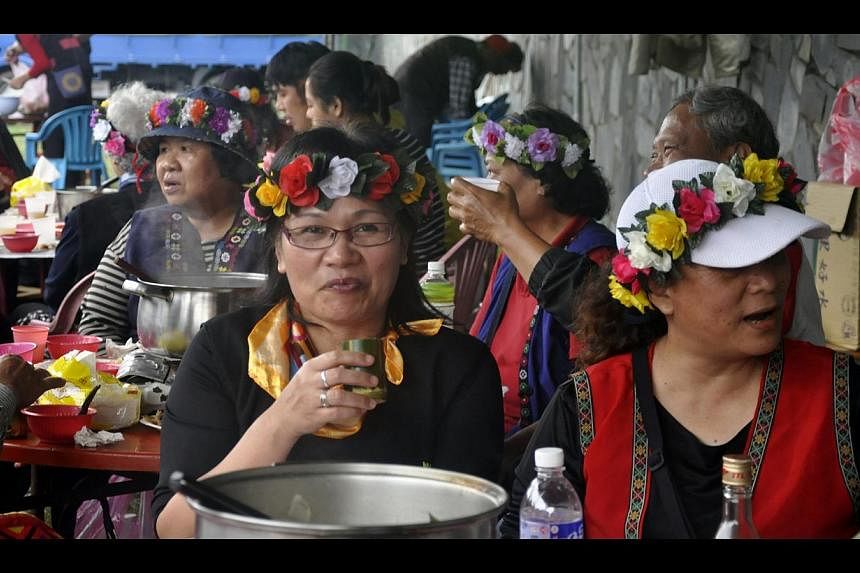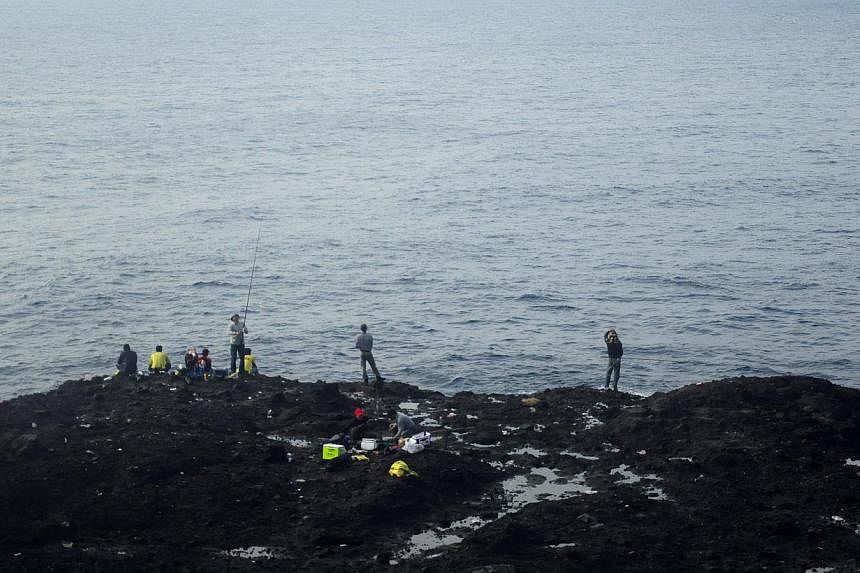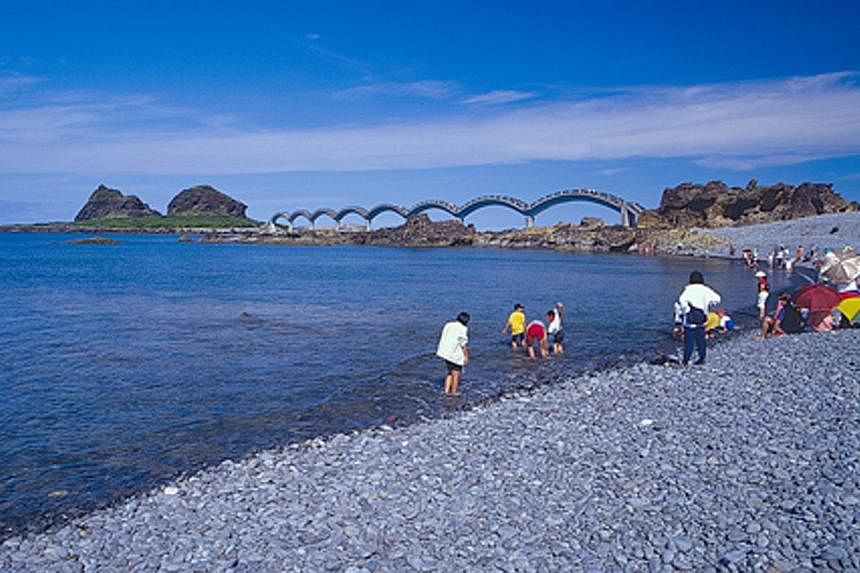As cars whiz by before us and with the roar of the Pacific Ocean at our backs, one of the most powerful men in Taiwan's aboriginal Puyuma tribe is being scolded.
I do not understand the language but the gist is clear. He, the stupid man, clucks a remonstrating woman as she gesticulates at his head, has left back home the most critical item for the ceremony.
I look around. Everyone - young, old, men, women - is wearing a beautiful crown of colourful flowers on his or her head.
The man, a former headsman of the Kasavakan village - childhood home of Taiwan pop star A-mei - shrugs sheepishly as he shepherds me across the road to where a raucous outdoor feast of chicken, beer and local rice liqueur is starting.
It is tomb-sweeping day to remember the ancestors who first landed on Taiwan "a few thousand years ago", way before the Han Chinese did, says headman Haku Dumaradas, 73.
And the idea behind the flower crown is a simple one: In paying respects to one's forefathers, one must look one's best. And what better way than to display nature's gifts on one's head?
Indeed, the entire county of Taitung is not shy about flaunting its string of natural gems - ocean, mountains, beaches, lakes and parks.
Located on Taiwan's south-eastern coast and a five-hour train ride from Taipei, Taitung is known as Taiwan's "back garden".
The county is among the farthest from the busy cities in the north and is on the side of the island that faces the blank blue expense of the Pacific Ocean, as opposed to the bustling west coast near mainland China where immigrants land.
Left relatively alone, the 3,515 sq km county is less developed than other parts of Taiwan and is sparsely populated.
Buildings are rickety but charmingly painted the cobalt blue of chemistry experiments, while a public bus lackadaisically trundles along every hour or so. Visitors drive or cycle along the coast on bicycles with the Taiwanese flag fluttering behind.
There is no factory, industrial park or skyscraper in this part of Taiwan. Instead, pebbled beaches stretch on endlessly, set against mountains. The aboriginal people, who comprise one-third of the local 230,000-strong population, carry on with their traditions, from old trades such as fishing and farming to a matrilineal lineage system where husbands take their wives' names and daughters inherit the family property.
At the Pisilian village of the Amis tribe where we stayed one night, Mr Fosay Sapiat, 57, is washing corals - "doing as told" by his wife Amoy Sapiat, 57, the village's administrator.
He laughs as he says: "We, men, don't have any property. The women take care of things while the men run about."
Asked for his original last name, he turns to his wife. Ms Sapiat furrows her brows. She does not remember either.
Still, change is on the way. Some younger women take their husbands' names now due to the influence of the Han Chinese, says Ms Sapiat.
Following some lawsuits, property by and large is fairly divided among all offspring. The villages have been shrinking as young people seek job opportunities outside the county, in cities such as Kaohsiung or Taipei.
Tribe leader Lai Yai, 67, frets about how the number of households under his charge has dwindled from its peak of 1,000 plus to 400 today. Half the population is either old people or children. This is why he favours building more factories or hotels to "bring back our young".
A high-speed rail train from the capital Taipei to Taitung will be ready this month, cutting the journey to 31/2 hours, swooshing visitors more speedily here.
But for now, the county remains uncrowded.
Visit its most famous spot, a little islet called the Sanxiantai (Three Immortals Platforms, so called for its three giant boulders), and it is almost empty.
Joined to the main island by a bridge in the undulating shape of a sea dragon, it protrudes from the eastern coast, marking Taiwan's farthest point out into the Pacific Ocean and a spot to view beautiful sunrises. The summer months of June to August are the best times to see the orange fireball rise in a cloudless sky over the ocean.
My travel companion Pearl and I walk around it - it takes an hour or so along a proper trail - and bump into a fisherman. It turns out that there is an unmarked route that the local anglers use, which will take us to the easternmost point of the islet.
He leads us, a styrofoam ice box slung across his back and a cigarette dangling from his mouth, past warning signs of "Do Not Enter", clambering over rocks and wading into seawater.
And it is beautiful when we get to the end. There is something to be said for perching on a headland, looking out at the Pacific Ocean and knowing that nothing blocks one's view - all the way to the American continent about 10,000km away. On the rocks, a clutch of fishermen dip their lines into the sea.
We have bigger "fish" to fry. We set off for the nearby Chenggong port, where a boat takes us out for a spot of whale-watching.
Favoured by the gods of ocean life, Taiwan's waters off its east coast teem with fish, sharks, dolphins and whales. This is because its seabed bottoms out abruptly, plunging 4km just 50km offshore, while the Kuroshio or Black Tide, a warm north-flowing current, transports migratory fish that the mammals feed on.
Nine species of whales, including the killer whale and the sperm whale, have been spotted, says Jin Ling Hao, a company that offers the two-hour trip. Our captain, Mr Chen Kun-lung, 60, weathered brown from sun and sea salt, offers this philosophical reply when asked how often the whales can be sighted: "You can wish all you want, but it depends on luck."
The Lady is not with us then; we do not spot any whales. The best time to go is June to August when waves are smaller.
Instead, during our trip in March, we are treated to a school of Risso's dolphin, known by the mottled patterns on their backs.
The rich sea life also means that Taiwan has one of the largest fishing industries in the world, employing about 300,000 people and accounting for 10 per cent of the tuna caught worldwide.
Here, in Taitung, the local social life revolves not around pubs or clubs, but the daily fish auction. Bundles of fish are placed on the ground with scraps of paper scrawled with the starting price. An auctioneer, trailed by interested buyers, mutters and negotiates the prices, as he moves along the line.
A housewife gleefully snares an iridescent parrot fish, dumping it casually into her scooter basket. The 4.7kg fish will be for her family's dinner that night, she says.
From the ocean, we head inland towards the mountains. We do not have enough time to hike. There are trails for those inclined but, instead, we decide to check out a famous local tourist spot: a tree by a rice field where Taiwanese actor Takeshi Kaneshiro sat, sipped tea and contemplated the beauty of life in an Eva Air commercial.
"I see paradise," he says, as he looks out at the jade-green fields.
The formerly obscure rural township has since exploded on the radar of Takeshi fan-girls and the lane - hitherto prosaically named Brown Boulevard - has since been nicknamed Takeshi Avenue.
The swoonworthy celebrity, alas, was not there when we visited.
But paradise? Yes.
This is the first instalment of a new series on off-the-beaten path places to explore around Asia and beyond.
HOW TO GET THERE
The best way to get to Taitung from Singapore is via Taipei, about 200km away from Taitung.
Eva Air offers a direct flight to Taipei, which takes four hours and 35 minutes and costs about $600.
An alternative choice is to fly Singapore Airlines, which costs about $1,000.
You can then take a direct flight from Taipei to Taitung with Uni Air, Eva Air's sister airline. The one-hour journey costs about $100.
We took the train to Taitung, which can be booked online (twtraffic.tra.gov.tw/twrail/English/e_index.aspx). The ride is about 51/2 hours and costs about $33.
A high-speed rail train from the capital will be ready this month, cutting the journey to 31/2 hours.
We rented a car from Ririfeng Car Rental Company (231133.emmm.tw/), which cost $166 a day. Call the company in advance on 886-932-660-771 or our friendly driver, Ms Kuo Yu Chen, on 886-919-199-601.
If you are confident about driving on your own, you just need to pay the rental fee, which is about $80 to $130 a day, depending on the car model.
The Taiwan Tourist Shuttle bus service offers the East Coast Line and Rift Valley Route, which transports you between the Taitung Airport, Taitung Railway Station and major attractions.
The cost is lower but you will need to check the timetable (www.taiwantrip.com.tw/Besttour/Info/?id=40) as the bus comes only every hour or so.
WHERE TO STAY
Forget cookie-cutter chain hotels.
Taitung is dotted with small guesthouses that offer friendly service, whimsical decor and breathtaking scenery.
We stayed one night at the Moon Rise Inn (No. 82, Junji, Dulan Village, Donghe Township, Taitung County; tel: 886-0910-449-7834; room rates: NT$3,800, or S$158, to NT$6,800 for two).
Furnishings are Ikea-style but views are top class, given its location. It is perched halfway up a mountain, offering vistas of the ocean and valley below.
A second night was spent at the Pisilian Guesthouse (No. 260, Bailian Road, Sanxian Village, Chenggong Township, Taitung County; tel: 886-089-851-004/886-988-353-122; room rates: NT$1,200), which is operated by an Amis village.
Amenities are very basic - mattresses are simply placed on the floor - but clean. Step out of the room and be greeted by adorably quirky paintings and wooden sculptures done in the style of Taiwanese artist Jimmy Liao (his students did the decorations as a community project) and the Pacific Ocean at your doorstep.
WHERE TO EAT
Fresh food is so readily available here that the idea of bagging leftovers is simply not done.
Locals eat the latest catch or locally harvested vegetables of the season. We were happy to partake in this tradition, whether it is at a seafood eatery, munching on fruit from a roadside stall or eating at the poshest place in town.
Right next to where the fish auction takes place in Chenggong is a row of seafood eateries.
One that came highly recommended is Mitaimu Lady Seafood (No. 85-12, Zhongshan East Road, Chenggong Township, Taitung County; tel: 886-089-852- 635). A meal of fried fish, seaweed soup, marlin sashimi and sweet potato leaves costs NT$900.
Another highlight is a restaurant called Urn Lily Spring (No. 138, Neighborhood 3, Chingpu Villiage, Hualien County; tel: 886-921-633- 406).
Tell the locals you are going there and they warn you that a meal costs NT$800 a person. It is probably the only prix fixe offering in the entire county, with eight courses that range from snow crabs to an enormous platter of local sashimi.
While not quite living up to its label of being the aboriginal world's El Bulli - the now-closed Spanish restaurant associated with molecular gastronomy - it does stand out for the sheer freshness of its sea-salt encrusted fish and greens, including a delightful "dragon beard vegetable".
Taitung also has its own version of Taiwanese beef noodles.
At Lin's Restaurant (No. 70, Waihuan Road, Taimali Township, Taitung County; tel: 886- 089-782-210), the broth is clear, the beef is tender but the stand-out item is the humble pickled vegetable. Ask the boss nicely for more.
Do not leave without trying the famous rice from around "Takeshi Avenue".
Does it taste as good as it looks? Get a bian dang, Taiwan's ubiquitous lunchbox, from Chishang Lunchbox - Zhengyi (No. 4, Zhongzheng Road, Chishang Township, Taitung County; tel: 886-089-863-521).
For NT$70, you get a paper box of rice with sausages, roast pork and some cabbage. If you really like it, you can even buy a bag of rice home.
